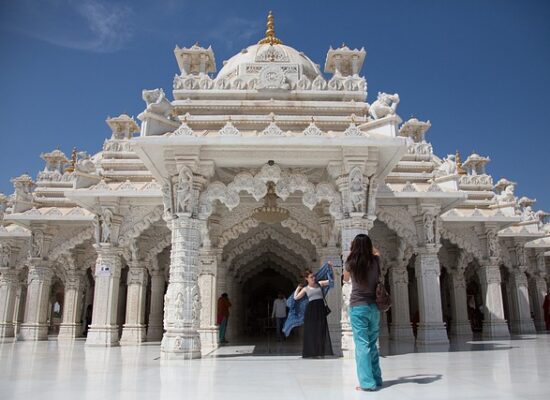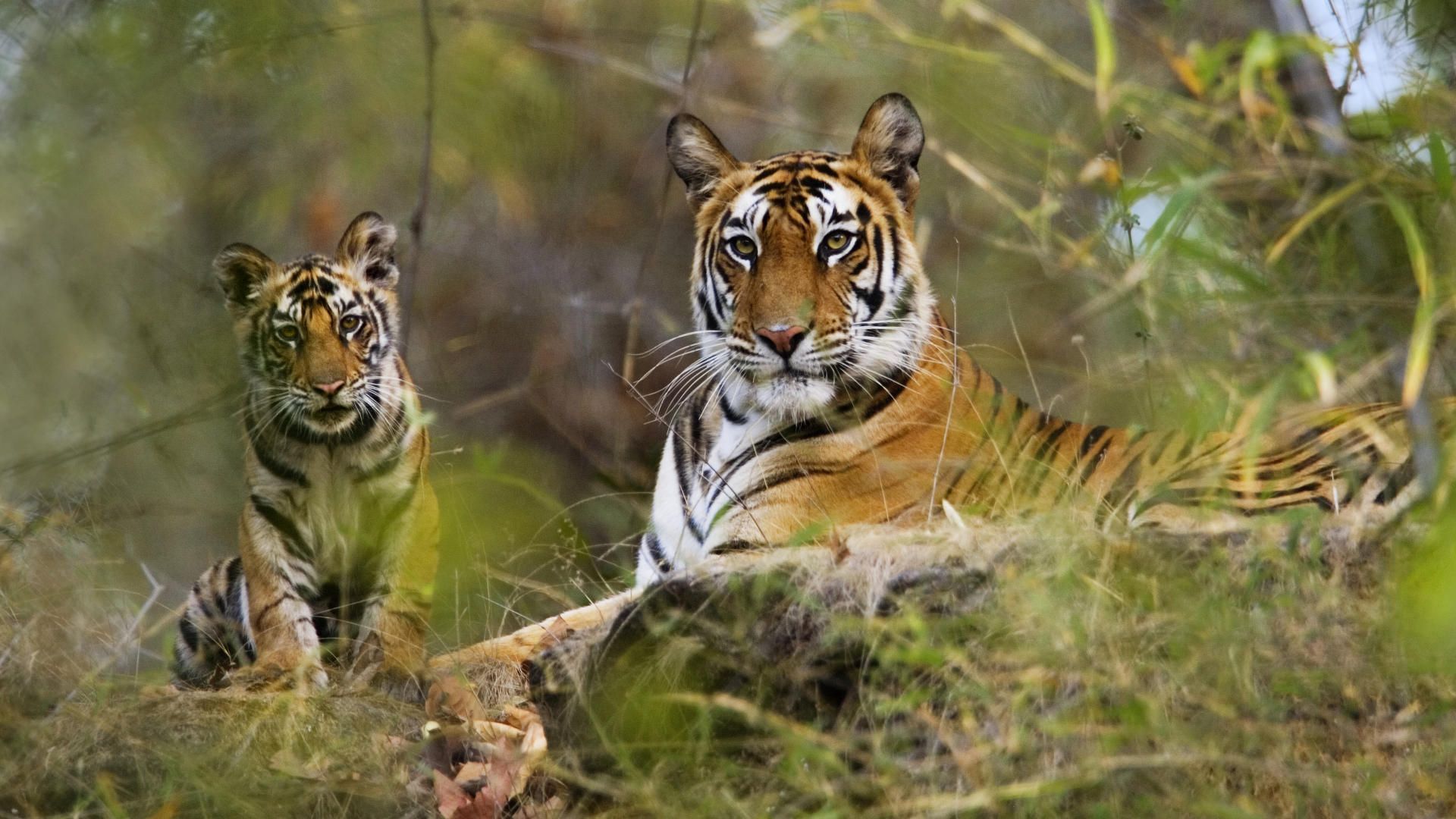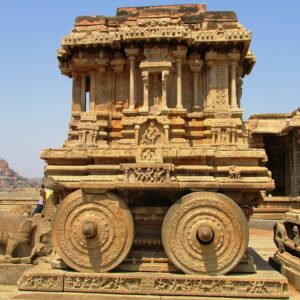Gujrat Tour Package
Duration – 07 Nights 08 Days
Overview
Discover Vibrant Gujarat: Your Gateway to Rich Culture and History
Gujarat, a western Indian state, is a treasure trove of culture, history, and natural beauty. Our Gujarat Tour Package invites you to explore this diverse and dynamic destination.
Ahmedabad, the state’s largest city, is a blend of tradition and modernity. Visit the Sabarmati Ashram, a place synonymous with Mahatma Gandhi’s life and philosophy. Explore the old city’s intricate pol houses, textile markets, and savor the famous Gujarati thali.
Gir Forest National Park, home to the Asiatic lion, offers thrilling wildlife safaris in a unique and diverse ecosystem.
Rann of Kutch presents an otherworldly landscape during the Great Rann Festival, where the salt desert comes alive with cultural celebrations.
Somnath and Dwarka, with their historic temples, offer spiritual serenity along the Arabian Sea.
Bhuj reveals the vibrant arts and crafts of Kutch, including intricate embroidery and traditional handicrafts.
Gujarat is also renowned for its culinary delights, with a wide variety of vegetarian dishes and snacks to savor.
Our Gujarat Tour Package provides a glimpse into this dynamic state’s rich history, spirituality, and craftsmanship. It’s an invitation to explore the wonders of a land where the past and present seamlessly coexist.

Tour Itinerary
Day 1: Arrive Bhuj
Meeting and assistance on arrival at Bhuj airport and private transfer to the hotel.In the afternoon, you would be visiting Aina Mahal and Prag Mahal.
The Aina Mahal was built during the reign of Rao Lakhpatji of the Jadeja Rajput dynasty, in the 18th century. Also called the Hall of Mirrors, the palace is a flamboyant structure that is lined with mirrors and pieces of glass. Shimmering and shining, the palace flaunts a mixed Indo-European style of architecture. It is said that its creator Ramsinh Malam built it after training as an artisan in Europe for 17 years. Malam personally made the beautiful fountains, mirrors, glasswork, doors inlaid with gold and ivory as well as a pendulum clock in sync with the Hindu calendar.
Adding to the splendor of the Aina Mahal, the Prag Mahal lies right next to it. Made of Italian marble and sandstone, the palace has spacious halls and a 45-m-high bell tower, which is a major attraction for visitors. The clock tower in the palace, which is considered to be the second-highest tower of its kind in India, is another attraction. From the top of the tower, one can get sweeping and panoramic views of the city
Dinner at the hotel.
Overnight in Bhuj
Enchanting and eclectic, the expansive city of Bhuj, the capital of the Kutch region, ensconced in the state of Gujarat, is like a continuous cultural fiesta. A launchpad to admire the mesmerizing beauty of the Great Rann of Kutch, Bhuj also invites visitors for its rich textile heritage.
Day 2 : In Bhuj
Breakfast at the hotel. On this day, explore some of the artistic heritage of the town. You would be visiting the villages of Khavda for pottery and Ajrakhpur for block printing. The small village of Khavda is located near the White Rann of Kutch in the Indian state of Gujarat. Pottery of this village is perhaps one of the oldest surviving art forms in the world. The origins of Khavda, Kutch Painted Pottery go as far as thousands of years back to the Indus Valley Civilization that flourished in the Kutch region, once upon a time.
Ajrakhpur is an art and craft town located in the desert city of Bhuj of State of Gujarat. The region is well-known around the world for its Ajrakh print, which is block printing on cloth. The settlement, which is 15 kilometers from Bhuj, has a history with Ajrakh printing dating back to the Muslim Khatri community’s forebears. Ajrakh’s block printing is entirely handcrafted without the use of any machinery or automation, drawing its inspiration from the hues found in nature. Dinner at the hotel.
Overnight in Bhuj
Day 3: In Bhuj
Breakfast will be served at the hotel. Visit to the villages of Bhujodi for handloom textiles, Nirona for Rogan art and lacquer ware and Hodka for quilts and leather bags.
Bhujodi is the hub of art and craft. Located about 8 km from Bhuj, one can actually see a variety of art forms being practiced here. From block printers and weavers to tie-dye artists, over 2,000 workers are engaged in creating beautiful handicrafts. The weavers of Bhujodi are believed to be Vankars or Mughal migrants who came 500 years ago from Rajasthan. They were initially engaged in weaving woolen blankets and veil cloths for the Rabari community. Located around 40 km north of Bhuj, Nirona village is where you can find three very unique local art forms in Kuch. Rogan art is a legacy art form that has been taken forward, for the past 300 years, by the Khatri family of Nirona.Resembling the characteristics of embroidery, Rogan art is when you paint on fabric using a thick brightly coloured castor seed oil.
The Lacquer Art is being practiced by the original migrants from beyond Sindh, before partition. Obtained from the sap of the Rhus Tree which changes color from white to brown upon exposure to air, Lacquer is a simple reflection of Zigzag patterns creating waves of colors mixing with one another and adorning simplest of the products like wooden spoons, bread rolling pins, containers, toys, utensils, etc.
Dinner at the hotel.
Overnight in Bhuj
Day 4 : Bhuj – Dasada
Breakfast will be served at the hotel. Drive to Dasada (280 Kms/ 6 hrs approx.). In the afternoon, jeep safari in Little Rann of Kutch. The Rann of Kutch is a geographically unique landscape that was once an arm of the Arabian Sea. As the land separated from the sea by geological forces, it became a vast, featureless plain encrusted with salt that is inundated with water during the rains. The safari across the Little Rann visits the ‘bets’, islands on the ancient seabed that are now higher grounds covered with grass and scrub.
Dinner at the hotel
Overnight in Dasada
Day 5 : Dasada-Ahmedabad
Breakfast at the hotel. In the morning, safari at salt flats & wild ass sanctuary. The only home of the wild ass in India, this sanctuary is situated in the area called the Little Rann of Kutch. Locally called the ghudkhar, Indian wild ass is known for a dark stripe along its back. Tourists can find around 3,000 wild asses in the sanctuary. Due to its location in the Gulf of Kutch, which is on the migration route of many birds, the sanctuary is an important site for birds to feed and breed in. About 75,000 birds nest here annually, including those from Egypt, Siberia, Europe, Iran and Iraq.
Drive to Ahmedabad (100 Kms/ 3 hrs approx.).
Overnight in Ahmedabad
Declared as India’s first UNESCO World Heritage City, Ahmedabad or Amdavad is steeped in history and tradition. Offering a seamless blend of spectacular architecture of centuries-old mosques and contemporary avant-garde design, Gujarat’s biggest city is a bustling cosmopolitan hub. Add to this a vibrant array of street-food and colorful bazaars, and Ahmedabad becomes a tourist hub where one would be spoilt for choices.
Day 6 : In Ahmedabad
Breakfast will be served at the hotel. In the morning hours take a brief walk covering some of the heritage sites of Ahmedabad. To experience the glory of Ahmedabad, it is recommended to walk through an old quarter and truly observe the nature of its architecture, its art, religious places, its culture and traditions.
Later, visit to Calico Museum (subject to availability). The Calico Museum of Textiles, under the aegis of the Sarabhai Foundation, is India’s premier textile museum. Its collection of Indian textiles is considered by many to be the finest and most comprehensive in the world. The textiles, along with the Sarabhai Foundation’s outstanding collection of South Indian bronzes, Vaishnava picchavais, Jain art, and miniature paintings, are housed in The Retreat which is located in the Shahibaug area of Ahmedabad.
Return to the hotel after your visits.
Overnight in Ahmedabad
Day 7 : In Ahmedabad
Breakfast at the hotel. Excursion to Sun Temple at Modhera and Rani Ki Vav in Patan.
The Sun Temple is a Hindu temple dedicated to the solar deity Surya, located at Modhera town of Mehsana district, Gujarat, India. It is situated on the bank of the river Pushpavati. It was built after 1026-27 CE during the reign of Bhima I of the Chalukya dynasty. No worship is offered now and it is a protected monument maintained by the Archaeological Survey of India.
Rani-ki-vav or the Queen’s Stepwell, is one of the many UNESCO World Heritage Sites that the state of Gujarat is home to. Situated on the banks of Saraswati river, this stunning architectural marvel was constructed by Rani Udayamati in the memory of her husband, king Bhima I, of the Chaulukya or Solanki dynasty (950-1300 CE).
Return to the hotel after your visits.
Overnight in Ahmedabad
Day 8 : Depart Ahmedabad
Breakfast will be served at the hotel.
In time, private transfer to the airport to board your onward flight.







